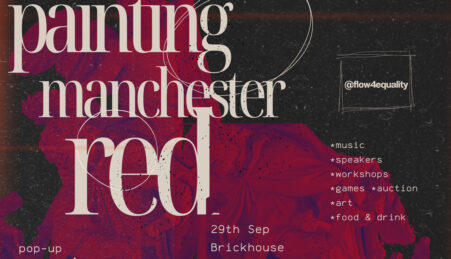
If the nineteenth century can be defined by one constant, it is the abundance of authors that revolutionized literature. Foundations were laid, history was chronicled. It was a time of growth, transition and adventure into an understanding of various art forms. Such themes took centre stage at the North-West Nineteenth Century Seminar hosted by Manchester Metropolitan University (MMU) and jointly funded by the Institute of Humanities and Social Sciences Research (IHSSR), the British Association for Victorian Studies and the British Association for Romantic Studies.
Gothic aficionado and organizer of the event Emma Liggins, Senior Lecturer in English Literature at MMU, described the seminar as a “research seminar about the nineteenth century for post graduate students and staff to exchange ideas and present works in progress.” A stimulating environment was presented through the guest speakers and discussions that followed.
 Dr Clare Horrocks, Senior Lecturer in Media, Culture and Communication at Liverpool John Moores University, kicked off the proceedings with her introduction of a digital archive concentrated around the defunct magazine Punch. The publication was a British satirical magazine established in 1841. It coined the definition of what a cartoon is in terms of a funny illustration. Corrocks admitted there should be “more of a focus” on digital archiving. She cited the works and contribution of W.M. Thackeray as an example of what can be found in the Punch archive.
Dr Clare Horrocks, Senior Lecturer in Media, Culture and Communication at Liverpool John Moores University, kicked off the proceedings with her introduction of a digital archive concentrated around the defunct magazine Punch. The publication was a British satirical magazine established in 1841. It coined the definition of what a cartoon is in terms of a funny illustration. Corrocks admitted there should be “more of a focus” on digital archiving. She cited the works and contribution of W.M. Thackeray as an example of what can be found in the Punch archive.
She explained the main focus of the archive was to help scholars find publications from lesser known authors. The data she collated was “beneficial” in being able to enhance the knowledge of people searching for a specific writer. Each individual is stored with the name of every publication. Corrock displayed graphs of Thackeray’s contributions through the year 1844 to 1854. Such precision is a reflection of how thorough her research is. It demonstrates the accuracy that is sure to come from the archive.
Analysis gave way to appreciation in Dr Jane Thomas’ presentation of ‘Thomas Hardy and the New Sculpture movement.’ Dr Jane Thomas, Director of the Centre for Nineteenth-Century Studies, at the University of Hull, offered an alternative title “a nice talk about country folk” — an apt name for a discussion that felt relaxed and immersive. The title was humorously derived from a quote by the artist Hamo Thornycroft who was a contemporary of Hardy. Thomas called it a “throw-away line” with a “wealth” of connection that she’s only scratched the surface of.
Thomas encouraged the group to invest in the idea of the “informing spirit.” This poetic concept defined the heart of the New Sculpture movement. It captured a moment frozen in time, a technique that was unheard of during the period. The presentation chronicled the friendship of Hardy and Edmund Gosse who first described Hardy’s book The Well-Beloved as a “sculpturesque novel.”
 Thomas compared the effect that New Sculpture artists had on Hardy’s works. The Well-Beloved tells the story of sculptor Jocelyn Pierston who obsessively searches for female beauty through his art. Thomas pointed out how Gosse set up an introduction between Hardy and Thornycroft who found the latter’s work to be “virile.” She admitted that although evidence suggests that Gosse wasn’t homosexual he was “certainly Hamosexual” in his appreciation of Thornycroft’s ability.
Thomas compared the effect that New Sculpture artists had on Hardy’s works. The Well-Beloved tells the story of sculptor Jocelyn Pierston who obsessively searches for female beauty through his art. Thomas pointed out how Gosse set up an introduction between Hardy and Thornycroft who found the latter’s work to be “virile.” She admitted that although evidence suggests that Gosse wasn’t homosexual he was “certainly Hamosexual” in his appreciation of Thornycroft’s ability.
After a tea and biscuit break came a shift in the style of presentation. The diversity of the event was highlighted by PHD students giving their papers. Jenny Davis, student at the University of Chester, presented her work on the depiction of female characters in Samuel Coleridge’s Christabel and George Eliot’s Daniel Deronda. She referenced the supernatural aspects of both pieces contributing to how the protagonists are viewed. The character of Geraldine in Christabel evokes serpentine imagery in the same way Gwendolen Harleth in Daniel Deronda does.
The final paper came from Vikki Garlick, PHD student at the University of Manchester. She introduced a presentation on the theatre owner William Henry Broadhead. Location and space played an important role for Broadhead who was different to his contemporaries. Garlick detailed Broadhead’s early life and how he was moved around from city to city. It gave him a unique perspective into location and helped him develop several theatres throughout the North West.
Garlick described him as being in tune with local affairs. Rather than spend large amounts on renovations like others on the theatre circuit he used sympathetic materials such as Accrington bricks. Broadhead’s business savvy mind allowed him to create successful businesses that helped him to support his six sons. At the end of the presentation Garlick showed a recent photo of Hulme Hippodrome, the headquarters of the Broadhead family. The building was a shadow of its former self, broken down and disused. It was enough to cause a melancholy atmosphere in the room. Such was the power of a topic that many people at the seminar didn’t know much about.
The seminar lived up to the expectation of being a forum in which to discuss ideas. By the end there was a sense of connection between the audience and speakers. An understanding had been reached and a deeper appreciation for the nineteenth century had been generated. It proved to be a stimulating gathering for staff, students and casual observes alike.
Jamie Ryder is an aspiring novelist with an appreciation for the fantastical and a love hate relationship with the written word. You can read more of his work on his blog.








Leave a reply